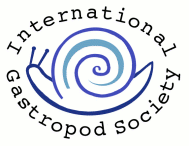
In this issue:
by Robert Nordsieck
Systematics is a field of biology most people interested in a particular group of animals are accustomed to. We all know, to be able to talk about something, it is mandatory to call it by the right name. But how is that done? Why do biologists use names that are sometimes hardly pronounceable? Why, of all languages, does it have to be Latin? And do those names also mean anything, or are they are a mere label for each animal?
In the 18th century, the Swedish naturalist Carl von Linné (in the latinised version of his name Carolus Linnaeus) was instructed to rearrange the royal collections in Gothenburg in Sweden. To be able to do so, he invented a new system of arranging life according to external, but also internal characters. To arrange all life, Linné found six major groups: Mammals, Birds, Amphibians, Fish, Insects and Worms. Worms were all animals he could not arrange in one of the other groups. He did, though, find some division criteria we still use today: For example the mussels with a two-part-shell opposed to the snails with a one-part-shell.
What Linné did find, though, was a novel way of naming animals. Today we call it binomial nomenclature (two-term naming). Each and any animal species received a new name consisting of two terms. One describing the larger group of relatives it belonged to, and one describing the species itself. So there is Helix pomatia, pomatia being the species and Helix being the so-called genus. Actually not all systematic names are Latin. They are only latinised. So for example Cornu aspersum (the brown garden snail) means the spotted horn, the genus Cornu being described first after a horn-shaped specimen. On the other hand there was once another systematic name for this snail: Cryptomphalus aspersus. Now we can see two things from this name: First Cryptomphalus is not Latin, it is Greek, meaning hidden navel, as the umbilicus cannot be seen in this snail's shell.
|
But it is latinised, otherwise it would have been kryptomphalos. And: The species' gender follows that of the genus. Cryptomphalus being male, so it has to be aspersus - other than Cornu being neutral, it is then aspersum. What is the advantage of so difficult systematical names? First, Latin and Greek were the languages of science in the times of Linné, just as English is today. On the other hand, all known species now had one definite name valid in all of the world. And the names made it possible to group species and genera into larger groups, the family of Helicidae, the order of Stylommatophora and the class Gastropoda (snails).
Those scientific names are beyond discussion. Well, almost. Since Linné's times, many famous malacologists have described new species of snails. There are over 40,000 of them, most of which Linné did not know, though he had animals sent to him from all over the world. The first scientist to describe a new species always has the right to give it a new name. He has to do so on the basis of a typus specimen that can be found in a museum or in a collection, he has to name it grammatically correctly in a latinised version and then his name will be put behind the species' scientific name. So it is Helix pomatia Linnaeus, 1758. Helix pomatia actually is one of the few snail species that today still go by the original name that Linné gave to it. As you can see, though, the scientific name of an animal is usually written in italics, the scientists name in capitals.
If it should happen, that new discoveries in science make it necessary to re-name a species (because of arranging it into a new genus, for example) the first describer's name is then written in brackets. But it will stay there forever.
To show, how that can happen, I will conclude with the story of Cornu aspersum (O.F. Müller 1774). The brown garden snail is well known. On the British Isles it is so well known, that it is even called Common Snail. It was first described in 1774 by Otto Friedrich Müller, a Dane (not a German as one might think). He described it as Helix aspersa, the spotted snail. In 1778 in Vienna, Ignaz von Born was given the task to re-arrange the imperial collections in what is today the Museum of Natural History and to catalogue all snails and shells. He did so and in the resulting works of "Index rerum naturalium Musei Caesarei Vindobonensis" he described the species anew, from a misshaped shell that looked like a horn.
|
He called it cornu copiae, the horn of plenty. Ignaz von Born, by the way, was a very interesting person.Originally coming from todays Romania, he was a freemason, a friend of Mozart and most probably is the person incorporated as Sarastro in the Magic Flute.
|
Almost a hundred years later, in 1837, the Swiss malacologist Jean de Charpentier described the species another time, as Cryptomphalus aspersus.
So you see that there were three different names for the same species. And the question of what is the definite scientific name of this snail species first described in 1774, over 230 years ago, has lost nothing of its importance. In the year 2001 the Check List of European Continental Mollusca (Clecom) was published. Here the species was published as Cornu aspersum (O.F. Müller, 1774), the reason being, that Cornu was the oldest valid genus name. The Italian malacologist Giusti had published a book in 1996: "The non-marine molluscs of the Maltese Islands", in which he arranged the species together with the grunting snail,Cantareus apertus (Born 1778) (the same von Born) in the same genus Cantareus Risso 1826, the reason being, that according to the code of rules of zoological nomenclature (to be found under http://iczn.org) a misshapen specimen must not be used as basis for naming. This part of his work, though, was not acknowledged by most malacologists who still remain with CLECOM, which is supposed to be the basis for Central European mollusc systematics.
So systematics still remains a field of biology, where much changes depending on what discoveries are made. Very often there are also reviews of systematic groups, where, on the basis of anatomical characters species and genera are rearranged. The estimate of how important such a character is and what the arrangement should look like, differs from one malacologist to another.
In a recent email from Joris Koene, a Dutch malacologist (see reference), I received the following information: "In the recent literature ... Cantareus seems to emerge. This is confirmed by molecular phylogenies like the one of Manganelli *) et al. 2005 ... and Koene & Schulenburg 2005 ... In both cases Cantareus aspersus comes out as being most closely related to C. apertus.".
*) Manganelli worked with Giusti on the book on Maltese molluscs (see reference).
And that is why this Cornu discussion certainly not will be the last we will hear from it.
Reference:
Links:
by Michael Davies
Classification
Kingdom - Animalia
Phylum - Mollusca
Class - Gastropoda
Subclass - Pulmonata
Order - Styllomatophora
Superfamily - Helicoidea
Family - Helicidae
Genus - Cepaea
Species - nemoralis Linnaeus, 1758 and hortensis Müller, 1774
Cepaea nemoralis and Cepaea hortensis are two very common species in Britain and many parts of Europe, they are a common feature of gardens and are a very colourful, beautiful species. The two species are quite similar and this causes some confusion. In this article I will explain how to identify them, along with information on habitat, breeding, diet, and caring for them in captivity.
The shells of the snails have 4 whorls and a height:width ratio of about 1.5:2. The shell is quite thick, smooth and dextral. The spire is slightly conical, and the shell has a rounded periphery and slightly convex whorls with quite deep sutures. The umbilicus is completely sealed. The lip of the shell is thickened when adult. The texture of the body is very smooth. Both snails are highly polymorphic, often depending on habitat.
Both species have a widespread habitat which includes woods, hedges, gardens, parks, grassland and dunes. Their diet is mainly plants, fruits and vegetables. They are oviparous snails, breeding in summer and laying about 50 eggs each, which take about 2 weeks to hatch. The newborn babies have a shell width of about 4mm and grow quite slowly. Lifespan is around 2 years. Common predators include birds such as songthrushes, which bang their shells against hard surfaces such as rocks to break them and eat the flesh inside.
|
Now I will explain the individual characteristics of the two species. The most important identifying factor is the lip colour.
Cepaea nemoralis Lip when adult is dark brown. The shell is 20-24mm wide. The shell is has a marginally flatter spire and is less spherical than Cepaea hortensis. The shell colour overall is more commonly variable than Cepaea hortensis. Shell colours include yellow, orange, brown, black, pink, purple, blue, either uniform colours or with one to five dark brown spiral bands of varying thicknesses, sometimes merging together. There is no 'general' shell colour, it is usually different depending on location and habitat. Body colour also varies: yellow, brown, grey, black, orangey. Definitely the most polymorphic variety in Britain and the largest native species. Internally, it has four of five branches to each mucus gland and the cross section of the dart has four flanges bifid at the tip.
|
Cepaea hortensis The lip colour when adult is white or very light. The shell is 16-20mm wide. The shell has a slightly taller spire and is more spherical/circular than Cepaea nemoralis. The shell is usually less polymorphic than Cepaea nemoralis, often restricted, especially in gardens, to a yellow shell either with or without dark brown bands. Body colour usually pale yellow or grey, often with a darker head. Prefers marginally colder and wetter places than Cepaea nemoralis and only occurs on dunes in North Scotland. Internally, it has two or three branches to each mucus gland and the dart cross section has four simple flanges.
|
Other notes: Juveniles of the two species have a flatter spire and a visible columella. Reliable identification of juveniles is not possible without adults for comparison as the two species share many shell colour and pattern varieties. Occasionally, hybrid specimens can occur as the two species are so similar genetically. Also, in very rare cases where a C. nemoralis will have a white lip, and a C. hortensis can have a dark lip, these should be compared to snails with the right lip colour nearby or refer to the other methods of identification. C. hortensis was originally treated as a subspecies of C. nemoralis.
Care
Both species can be kept in captivity. They need a similar setup to GALS although these snails do not tolerate excessive humidity or heat. A water dish is probably not a good idea. These snails like to burrow in moss or soil and also may like to climb on something like a branch. They eat many types of plant, fruit and vegetable such as lettuce, cucumber and sweetcorn. They need a calcium source such as cuttlefish. They can be bred in captivity, eggs are not hard to hatch but he babies are very delicate. They may try to hibernate in winter, whether or not you let them is optional.
by Arno Brosi
This idea comes from the petsnails.co.uk-forum where a member saw it being used on Animal planet.
What you need:
|
Tools needed:powerdrill,hammer,saw,screwdriver,wirestripper or knife.
How to build it:
|
|
|
|
What it costs: That depends really,most of the materials used you might already have laying around the house.But if you have to buy all the materials new I would say less than €10.00 or £7.50.
Alternatives:The heatmat of course,but since those are quite expensive this idea is such a good one.Especially because it doubles as a humidifier.
Lamps:Another good,additional,heating source are lamps.There are special reptile ones on the market,but ordinary ones seem to work just as well.Some research will be needed,however,into all the different options: infrared,daylight blue etc.
by Leah Winstone
I came up with this particular recipe myself but I know of many people that use porridge to feed their snails. I was having a little trouble getting mine to eat much at all so I did some digging around for different foods. I found that porridge was the best for feeding picky snails on so built on that, focusing on what my snails really needed in their diet as well as making it adaptable.
Ingredients:
> To make:
> 1. Mix the porridge oats and water so that you have a fairly thick mixture, a little water will go a long way but make sure the oats have soaked up as much water as possible.
2. Grate the apple and add to the mixture. Try and grate it as small as possible because I find that my snails find it difficult to eat apple, it's a little to tough for them.
3. Crush a little cuttlefish (this is usually easier if you wet it first) and add to the mix. Or add your other calcium.
4. Shred the dandelion leaves and mix in with the porridge.
5. Microwave for a few seconds as they seem to prefer it warm.
|
Why is it so good for them:
Firstly porridge is brilliant if you are having trouble getting your snails to eat and for very young snails. They seem to eat it no matter what and it's easy for them to rasp at as well as providing water for them.
The apple makes it more appealing for them and gives them extra goodness.
Snails need a lot of calcium to grow strong shells so if you can get a little calcium into everything they eat they should grow well, even if they are uninterested in plain cuttlefish.
Dandelion leaves, amongst other green leaves, are good because they are high in phosphorus. This is very important as the body needs phosphorus to process calcium.
And lastly I like this recipe because you can change it to fit your snails. If yours don't like apple try something else instead. You can add more or less of each ingredient depending on what your snails need most. You can make sure they have a varied diet by adding a different fruit and leaf each time you feed it. You don't have to stick with apple and dandelion.
|
|
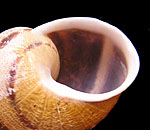 The hidden umbilicus
The hidden umbilicus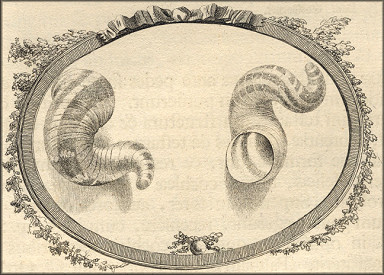

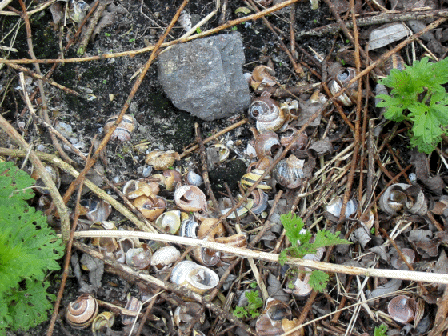 photo:Arno Brosi
photo:Arno Brosi
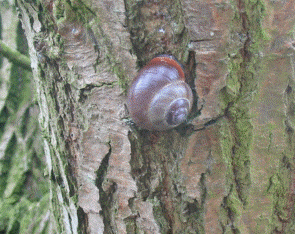
 photo's:Arno Brosi
photo's:Arno Brosi

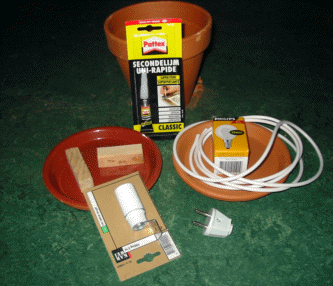
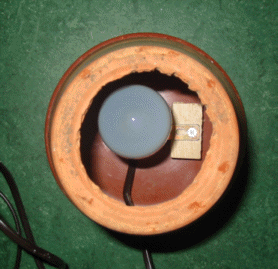




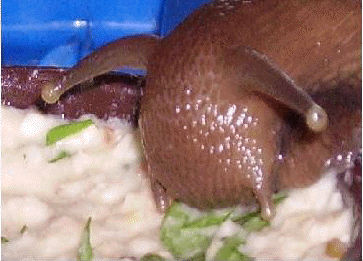 photo:Leah Winstone
photo:Leah Winstone
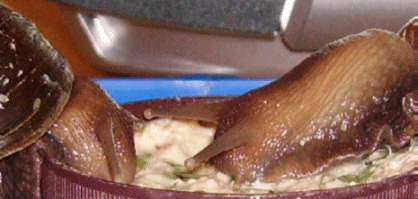 photo:Leah Winstone
photo:Leah Winstone
